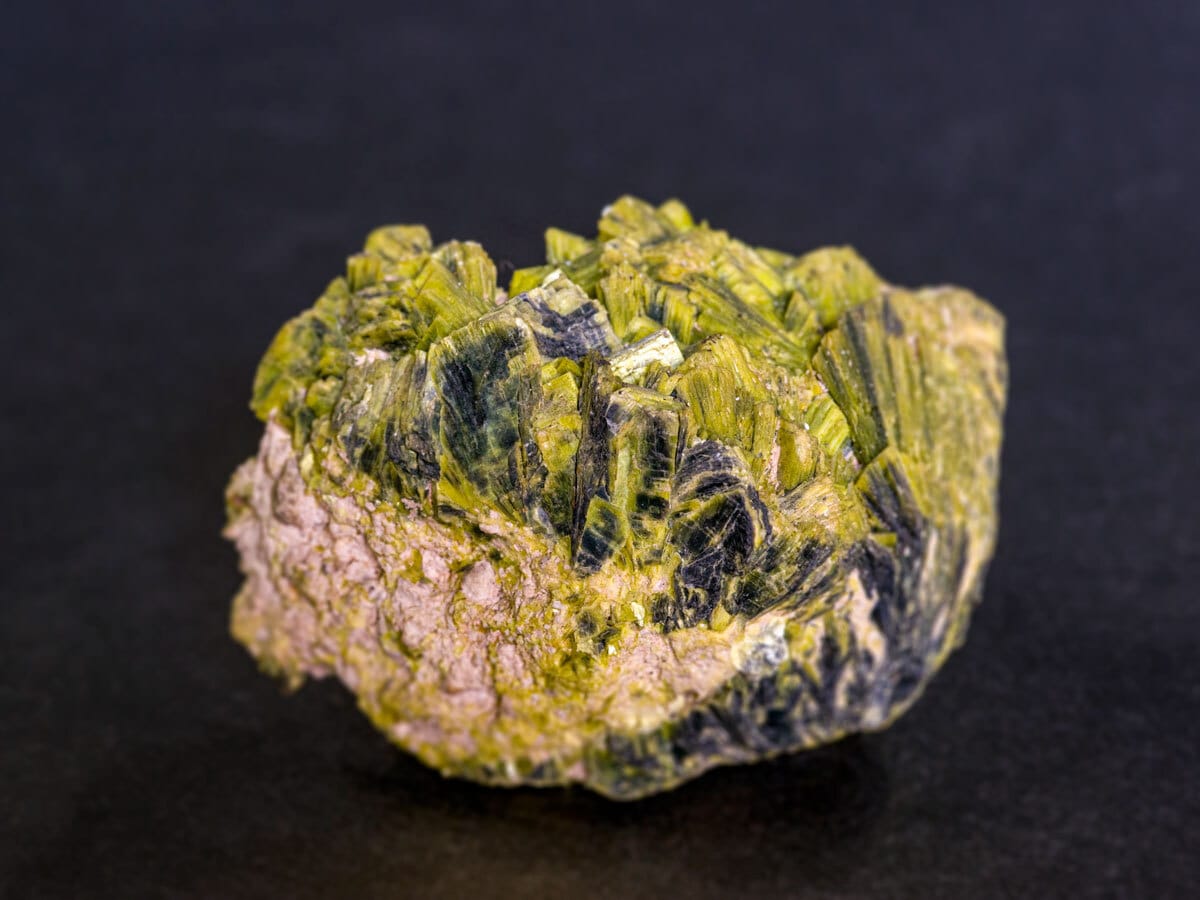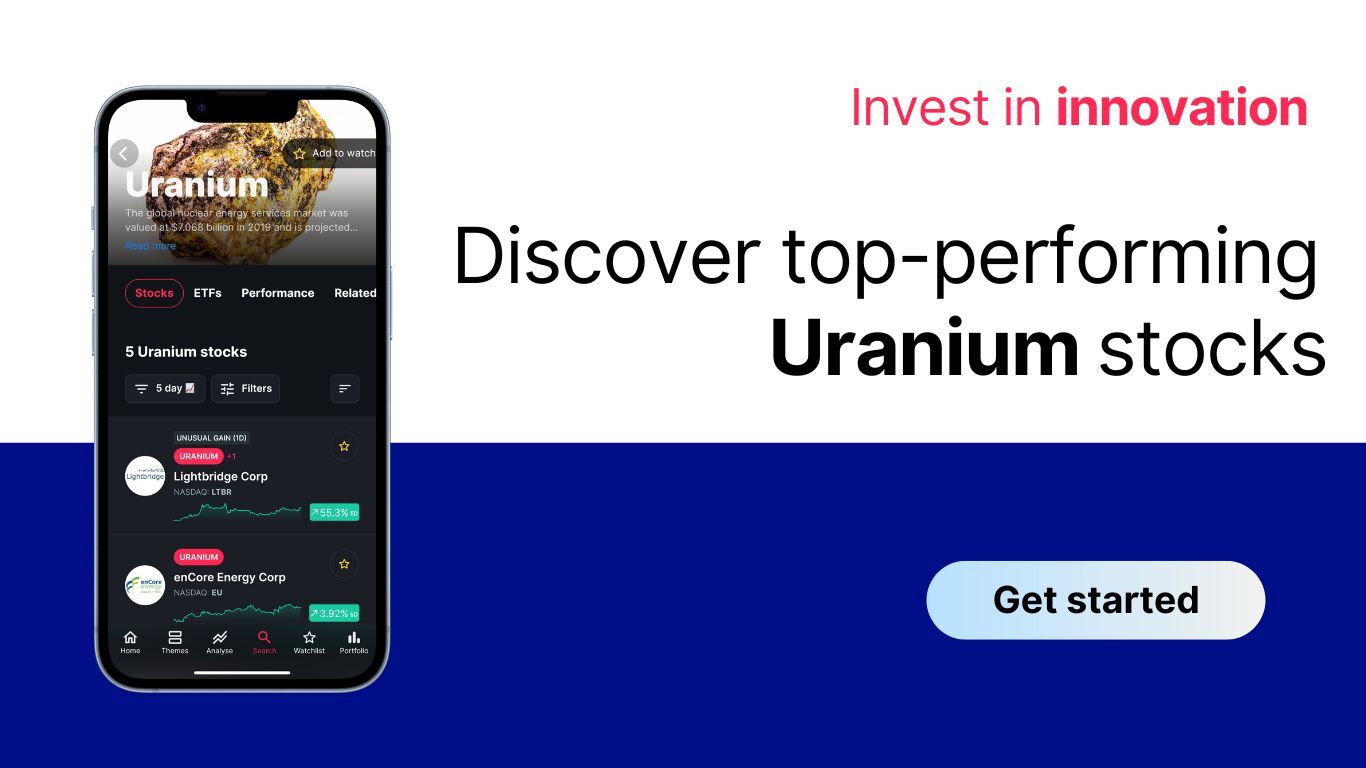As demand for nuclear fuel heats up amid a push away from fossil fuels, uranium stocks have been boosted as prices skyrocket to all-time highs. The commodity is up 54.1% in the past year through 28 June, compared to a 21.4% gain in gold prices and a 70.2% slump in lithium prices.
Attitudes towards nuclear energy have been shifting as governments look to reduce their reliance on Russia. Favourable policies have the potential to sustain market growth. At COP28 last December, the UK, US and 20 other countries agreed to triple their nuclear energy capacity by 2050, providing a major tailwind for uranium stocks.
World nuclear reaction requirements were estimated to be 65,650 tonnes of uranium (tU) in 2023, according to a World Nuclear Association report released in May. The industry body expects demand to hit 130,000tU, possibly rising to 184,300tU, by 2040. In the near term, however, uranium producers could struggle to meet this demand.
Supplies have been tight this year, which has triggered physical uranium buying activity among hedge funds and investment banks, including Goldman Sachs [GS] and Macquarie [MQG:AX], as they look to capitalise on the rising uranium spot price, Reuters reported back in February.
In order to supply near-term uranium demand, uranium miners and producers are going to need to ramp up production. A number of uranium stocks are rising to the challenge.
Five Top Uranium Stocks to Watch in July
| Ticker | Company Name | Market Cap | Year-to-date Performance (as of 28 June) | P/S Ratio |
| PDN:AX | Paladin Energy | A$3.74bn | 27.1%* | 5.39 |
| DNN | Denison Mines | $1.79bn | 12.4% | 645.67 |
| CCJ | Cameco | $21.38bn | 14.2% | 11.58 |
| BOE:AX | Boss Energy | A$1.66bn | 1%* | N/A |
| NXE | NexGen Energy | $3.92bn | -0.3% | N/A |
*as of 1 July
Source: Yahoo Finance
Paladin Energy [PDN:AX]
Paladin Energy has several mining projects in Australia, Canada and Namibia.
Why invest in Paladin Energy?
The ASX 200-listed producer and explorer entered into an agreement to buy Canadian miner Fission Uranium [FCU:TO] in June. The deal, worth C$1.1bn, will see Paladin take control of Fission’s uranium project in Canada’s Athabasca Basin, where ground for uranium exploration is highly sought-after, due to its high-grade deposits. Paladin is set for a dual listing on the Toronto Stock Exchange once the deal has been completed.
Denison Mines [DNN]
Denison Mines is focused on the Athabasca Basin region.
Why invest in Denison Mines?
The Canadian producer could be a major beneficiary if the US uranium industry were to fall short of meeting domestic demand, according to Roth Capital Partners analyst Joe Reagor, who initiated coverage of the stock in June with a ‘buy’ rating and a $2.60 price target, 27% of its closing price on 28 June. The problem, according to Roth, is that the US relies on supply from “unstable or unfriendly jurisdictions”, but Denison Mines would be attractive because Canadian projects “are generally larger and lower-cost”. He highlighted its Phoenix deposit in the Athabasca Basin as “an ideal source of uranium for the US market”.
Cameco [CCJ]
Cameco is one of the world’s largest publicly traded uranium companies, producing 12% of the world’s total uranium in 2022.
Why invest in Cameco?
The uranium giant’s Q1 production was strong, up 29% year-over-year. Sales volume dropped 25%, while the average realised prices on uranium sold rose 27%. Cameco should be well-placed to benefit from the clean energy transition, as most of its operations are in the Athabasca Basin, a region associated with the lowest degree of geopolitical risk, according to analysis by Rockstone Research published via Seeking Alpha. Production at its McArthur River/Key Lake project is forecast to hit 18 million pounds this year, up from 13.5 million pounds in 2023.
Boss Energy [BOE:AX]
Boss Energy has 100% ownership of a project in south Australia and has recently acquired a 30% stake in a project in Texas.
Why invest in Boss Energy?
The Australian producer filled the first drum of uranium from its Honeymoon project in the south of the country in April. Honeymoon, which it acquired back in 2015, could potentially produce 942tU of uranium per year once it’s been fully ramped, according to estimates from the World Nuclear Association released in April. Last week, Boss Energy released some promising drilling results that could boost Honeymoon’s production and lifespan.
NexGen Energy [NXE]
NexGen Energy is concentrating on the acquisition, exploration and development of Canadian uranium projects.
Why invest in NexGen Energy?
The Canadian company’s Rook I project moved closer to construction last week after the Canadian Nuclear Safety Commission started a two-month technical review that, if passed, will grant the project environmental approval. Rook I is the largest development-stage uranium site in Canada, situated in the southwestern Athabasca Basin. Once it is up-and-running, the company expects the mine to produce an average of 21.7 million pounds annually over its predicted 11-year lifespan.
To discover more uranium miners and producers, download the OPTO app.
How to Invest in Uranium
Geopolitical risks mean the uranium spot price can be prone to wild swings. Investing in uranium stocks thus requires a substantial appetite for risk.
Other than buying and trading individual uranium stocks, a way to gain exposure to the commodity is through thematic ETFs.
Sprott’s Uranium Miners ETF [URNM] and Junior Uranium Miners ETF [URNJ] are pure plays on the uranium mining industry; they offer exposure to a range of mining projects at different stages of exploration and development.
The Global X Uranium ETF [URA] offers broader exposure to the uranium supply chain as it holds not only miners and producers but engineering and heavy industrial companies, as well as those that earn revenue from streaming and royalties.
Both fund types have their advantages and disadvantages. The OPTO app features a range of uranium-focused ETFs.
Conclusion
If supplies of uranium continue to be squeezed, then the uranium spot price could continue the hot streak it’s been on this year. This could lead to more uranium miners and producers ramping up production, while it could also trigger deal-making for high-grade assets.
There’s no guarantee the situation will play out this way. The bears would argue that the uranium price could quite easily crash, as the lithium price did in 2023. Nevertheless, if you can handle the risk, then you can start your uranium investment journey by downloading the OPTO app today.
Continue reading for FREE
- Includes free newsletter updates, unsubscribe anytime. Privacy policy






